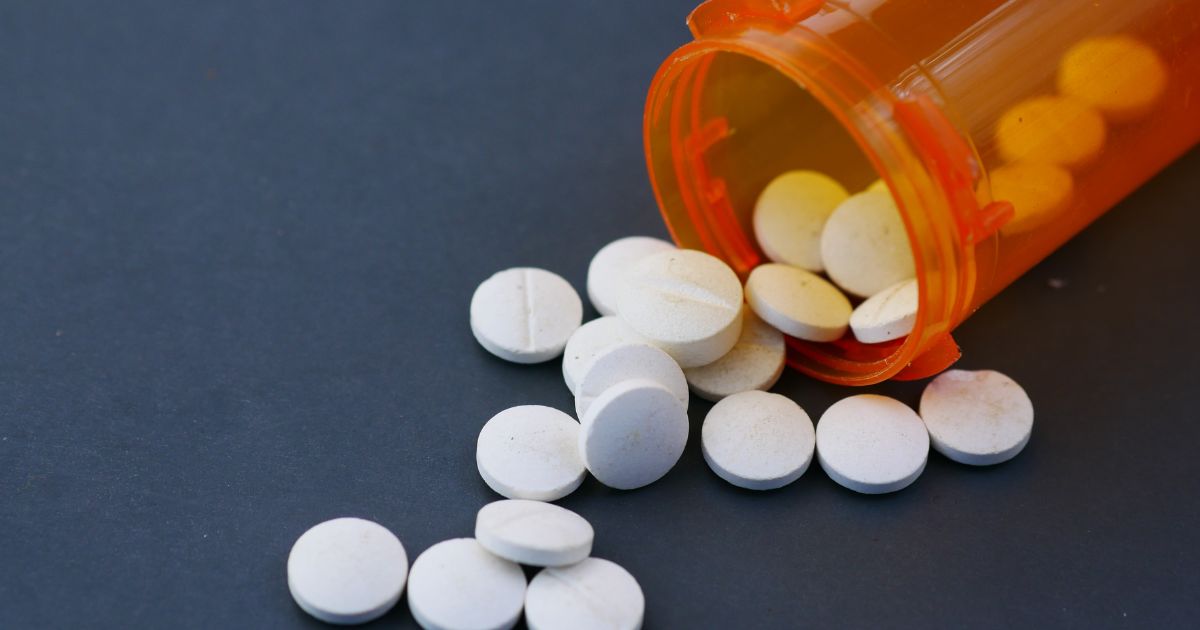Fighting the opioid epidemic has become a national priority after the United States declared the opioid crisis as a national public health emergency under federal law on October 26th, 2017.
Who Can Declare a Public Health Emergency?
“The Secretary of the Department of Health and Human Services (HHS) may, under section 319 of the Public Health Service (PHS) Act, determine that: a) a disease or disorder presents a public health emergency (PHE); or b) that a public health emergency, including significant outbreaks of infectious disease or bioterrorist attacks, otherwise exists” (“Public Health Emergency Declaration”).
From a laundry list of public health declarations, the declaration that “a public health emergency exists nationwide as a result of the opioid crisis” was the only declaration of a public health emergency that was related to drugs/addiction among hundreds of emergency responses to natural disasters. The Opioid crisis declaration of being a national public health emergency was renewed as a public health emergency seven times since it was originally declared in October of 2017.
The Declaration
The original declaration of this national public health emergency reads as follows:
“As a result of the consequences of the opioid crisis affecting our Nation, on this date and after consultation with public health officials as necessary, I, Eric D. Hargan, Acting Secretary of Health and Human Services, pursuant to the authority vested in me under section 319 of the Public Health Service Act, do hereby determine that a public health emergency exists nationwide” ( “Determination that a Public Health Emergency Exists”).
What Does it Do to Declare Something a Public Health Emergency?
Declaring the opioid crisis a matter of national public health “…legally authorizes federal, state, tribal, and local authorities to allocate existing personnel and resources toward opioid prevention efforts, waives some key legal inhibitions, ramps up critical public health surveillance, and facilitates greater coordination across federal agencies” (“Public Health Emergency Declaration”).
175 Americans are dying from drug overdoses each and every day. So, what is America doing about the opioid crisis? Here are some of the major actions to reduce, repair and prevent this epidemic from further progression:
Suggestions
The United States enacted a commission directly responsible for collecting information and offering up solutions to best handle the current opioid crisis. After its’ enactment, a thorough report was developed by the Commission on Combating Drug Addiction and the Opioid Crisis, outlining strategies and recommendations for further review. Found in the report is a Summary of Recommendations, which includes subtopics of the following: Federal funding and programs, opioid addiction prevention, opioid addiction treatment, overdose reversal, and recovery, and research and development. Some of the main points discussed in the summary of recommendations, include:
“The Commission recommends that HHS (Health & Human Services) coordinate the development of a national curriculum and standard of care for opioid prescribers. An updated set of guidelines for prescription pain medications should be established by an expert committee composed of various specialty practices to supplement the CDC guideline that are specifically targeted to primary care
physicians.”
disseminated to all levels of medical education (including all prescribers) on screening for
substance use and mental health status to identify at risk patients.”
regardless of insurance status or ability to pay.
overdose episodes, and SUD-related decision support tools for providers is necessary to
increase effectiveness.”
and the VA remove reimbursement and policy barriers to SUD treatment, including those, such
as patient limits, that limit access to any forms of FDA-approved medication-assisted treatment
(MAT), counseling, inpatient/residential treatment, and other treatment modalities, particularly
fail-first protocols and frequent prior authorizations. All primary care providers employed by
the above-mentioned health systems should screen for alcohol and drug use and, directly or
through referral, provide treatment within 24 to 48 hours.”
indirectly impact reimbursement) to better cover the true costs of providing SUD treatment,
including inpatient psychiatric facility rates and outpatient provider rates.”
Justice Assistance (BJA), the Substance Abuse and Mental Health Services Administration
(SAMHSA), and other national, state, local, and tribal stakeholders use medication-assisted
treatment (MAT) with pre-trial detainees and continuing treatment upon release.”
district court system in all 93 federal judicial districts. States, local units of government, and
Indian tribal governments should apply for drug court grants established by 34 U.S.C. § 10611.
Individuals with an SUD who violate probation terms with substance use should be diverted
into drug court, rather than prison.”
Prescription Pills and America
Prescription pills like opioids have historically endangered public health as the growth of opioid addiction grew alongside opioid overdose. In the United States, pain has been treated using prescription opioids for decades, in the mid to late-19th century, opioid use grew dramatically as it was being prescribed to injured or diseased Civil War combatants and veterans. Opioids have once again permeated into a public health crisis, as opioids are being over-prescribed, abused, trafficked, and pressed into pills that are all leading to death at an alarming rate.
Usually, treatment plans for pain sufferers are set by a physician who usually sees the only solution to be prescription pills for their pain; “It is estimated that 1 out of 5 patients with non-cancer pain or pain-related diagnoses are prescribed opioids in office-based settings” (Daubresse). Often, opioids are prescribed without properly discussing the risk factors, potential for addiction, dependency/tolerance, and other important factors for the patient to know. This failure to properly communicate all of the risks can lead to a number of issues.
Many chronic pain sufferers will develop a dependency on their prescription pain pills, and may find themselves reaching for illicit drugs if they are unable to refill their prescription, or have used up all of their pills early. This dependency can lead to overdosing on prescription pills taken in a higher dose, being mixed with other prescription or illicit drugs, or replacing the prescription with a more accessible illicit drug like heroin. “The crisis in opioid overdose deaths has reached epidemic proportions in the United States (33,091in 2015), and currently exceeds all other drug-related deaths or traffic fatalities” (Christie). “The overall death rate was higher for prescription opioids…while an increasing proportion now involves synthetic opioids, mainly fentanyl” which individual states declared the culprit of over 50% of the overdose deaths in their state (Christie).
(The Commission on Combating Drug Addiction and the Opioid Crisis).
The Need For Treatment
Despite there being an extreme need for addiction treatment centers across the United States, data collection showed that “Across all U.S. counties, 38% did not have a treatment facility for SUD in 2016. Ten percent of large central metro counties did not have an SUD treatment facility. The data show that progressively larger proportions of counties did not have SUD treatment facilities as the level of urbanization decreased. Among the most rural counties, 55% did not have a substance use treatment facility” (Christie). Even more disturbing is the shortage of drug or alcohol treatment facilities in America that do not offer Medicaid coverage for their services.
85% of all counties in the U.S. do not have any opioid treatment programs that provide medication-assisted treatment— which is addiction treatment that offers medication alongside behavioral therapies to treat addiction. In rural counties, the numbers are even more shocking— 91-99% lack an opioid treatment program. The Summary of Recommendations released in a report by the Commission on Combating Drug Addiction and the Opioid Crisis “…addresses solutions to each of the core components of the crisis, a trajectory which begins with drug supply, attitudes towards drug use and knowledge of opioids, risk factors for misusing, and progresses to addiction, transition to heroin/fentanyl, situational factors in overdose, rescue, treatment, relapse prevention, recovery support, and continuum of care” (Christie).
Opioid misuse will have short term and long term effects, which is why the appropriate addiction treatment is necessary to overcome this consuming addiction. We are glad to see that the opioid crisis is recognized as a public health emergency, and is beginning to be treated as one. We hope to see the American government more involved in solution and prevention-based action. Our hope is to see the impact of this horrific drug addiction lessened as much as possible.
References:
Daubresse M, Chang H, Yu Y, Viswanathan S, et al. Ambulatory diagnosis and treatment of nonmalignant pain in
the United States, 2000 – 2010. Medical Care 2013; 51(10): 870-
878.
“Determination That a Public Health Emergency Exists.” Phe.gov, U.S. Department of Health and Human Services, 26 Oct. 2017, www.phe.gov/emergency/news/healthactions/phe/Pages/opioids.aspx.
Governor Chris Christie, et al. “The President’s Commission on Combating Drug Addiction and the Opioid Crisis.” Final Report Draft , Commission on Combating Drug Addiction and the Opioid Crisis, 1 Nov. 2017, www.whitehouse.gov/sites/whitehouse.gov/files/images/Final_Report_Draft_11-1-2017.pdf.
“Public Health Emergency Declaration.” Phe.gov, U.S. Department of Health and Human Services, www.phe.gov/Preparedness/legal/Pages/phedeclaration.aspx.
Our Treatment Offerings
At Royal Life Centers, we have a variety of treatment programs designed to follow guests through the stages of the recovery process. Our philosophy is to treat addiction holistically— that is by treating the mind, body, and spirit— for a full recovery. Royal Life Centers is experienced in treating an addiction to opioids, or opioid use disorder. We offer specific opioid treatment programs, designed to specifically meet each guest’s needs, goals, and circumstances. Our treatment offers both medication-assisted detox and medication-assisted treatment, on a case-by-case basis. We offer both inpatient and outpatient treatment options. Royal Life Centers has treatment programs, including: medical detox, a residential inpatient program, a partial hospitalization program (PHP), an intensive outpatient program (IOP), an outpatient program (OP), sober living and graduate housing.
If you or someone you know is struggling with an addiction, please reach out to our addiction specialists for guidance and support at (877)-RECOVERY or (877)-732-6837. Our team is available to take your call 24 hours a day, 7 days a week. Because We Care.









